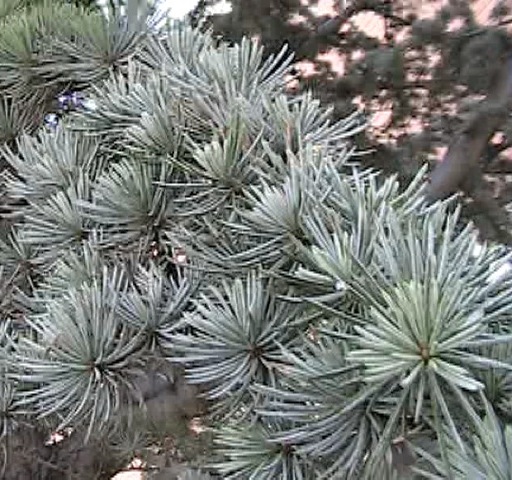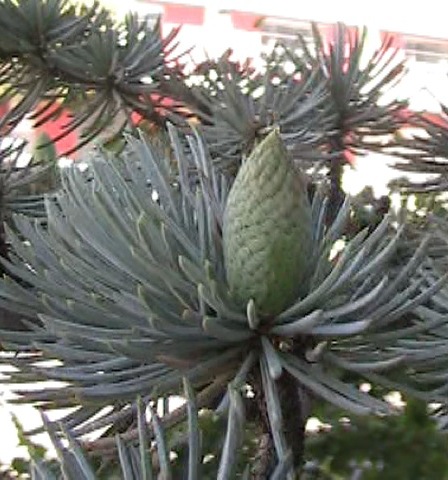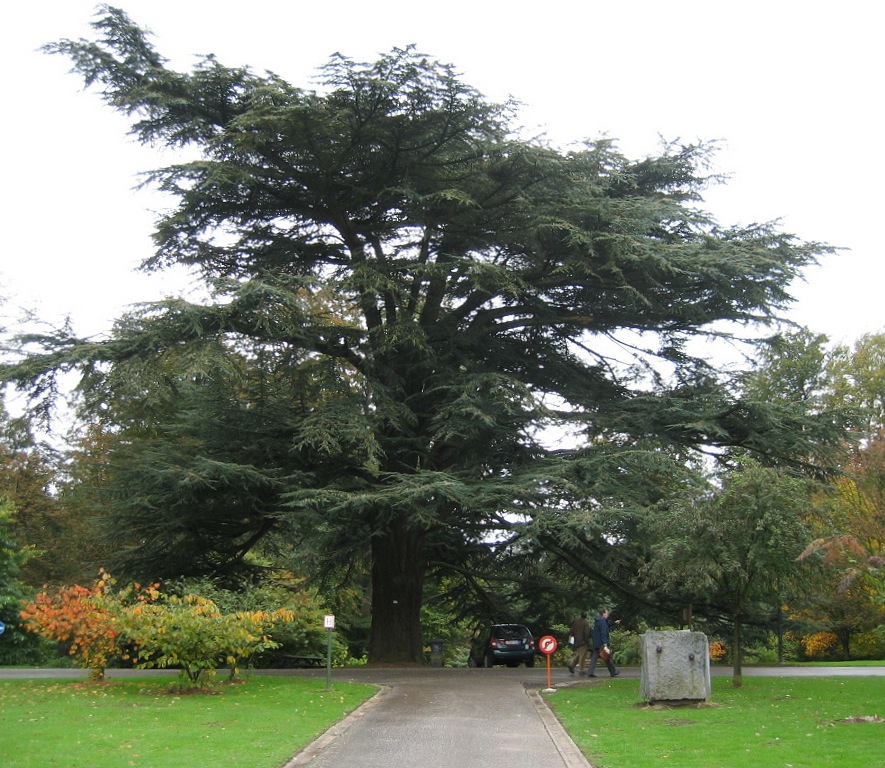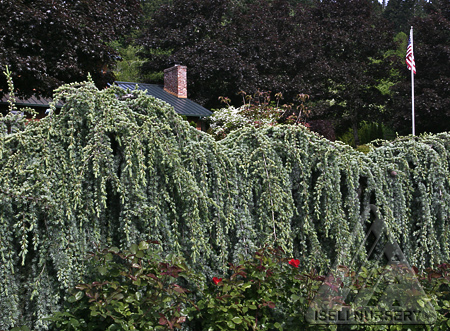| PSC 2620: Woody Trees and Shrub | Course Home | Week 13 |
Cedrus atlantica - Atlantic Cedar
Plant Viewer
 |
 |
| The short needles are arranged in rosettes on the tops of the branches. | Male cones form in the lower part of the tree and are 2-3 inches long. They turn dark brown when mature. |
 |
 |
| The female cones form in the upper portions of the tree and are 4-6 inches long. They are very resinous. Image: Treebeard (Wikimedia.org) | Atlas Cedar is a stately and picturesque tree perfect for use as a focal point in the landscape. |
Plant Description
Cedrus atlantica, or Atlas Cedar, is a medium to large evergreen tree (40-60 feet high and 30-40 feet wide). It has a somewhat stiff and sparse branching habit, but a very picturesque form that creates a very striking image in the landscape. When young the tree has a fairly good pyramidal form. At maturity it becomes more spreading and often flat-topped - which is when it is typically considered to be the most stately in appearance. It is a zone 6 tree, but will grow in a protected area in zone 5 where it will not be subject to strong winter winds. It prefers to grow in rich and moist acidic soils in full sun. It can tolerate drier conditions and other soil types once established.
The bark is smooth and gray in color when the tree is young, before forming thick bark divided into plates at maturity. The foliage is composed of small (1/2 - 1 inch), bluish-green needles that have a slight curl to them. They are arranged in tight whorls that are densely packed on the upper side of the stems. The foliage is unique and quite ornamental.
Both male and female cones form on the tree. The male cones are only 2-3 inches long and are oblong in shape. They are initially a light green color before turning a deep brown. They are held erect above the stems and tend to be more numerous in the lower branches of the tree. Typically held higher in the tree, the female cones are larger (4-6 inches), but are also oblong shaped and held upright. They have a multi-layered appearance. They often secrete quite a bit of resin, which can cover the cones and give them a shimmering appearance. They are light green in color before maturing to a purplish color and finally a rusty brown color. The cones open starting at the top and will slowly erode away down to the base.
Landscape Use
Use Atlas Cedar as a focal point in the landscape. Its rugged beauty will become lost in a large clumping of trees, and is better suited to being a specimen tree.
Points of Interest
Winter die back, or at least needle kill, is common in a colder winter, but otherwise it has few pests in our climate.
Notable Cultivars
var. glauca Pendula
A strongly weeping form with blue-green foliage. It needs to be staked for a good central leader to form. With training it can form a cascading mound or a elongatd serpentine habit. It is one of the best specimen plants I know of.
